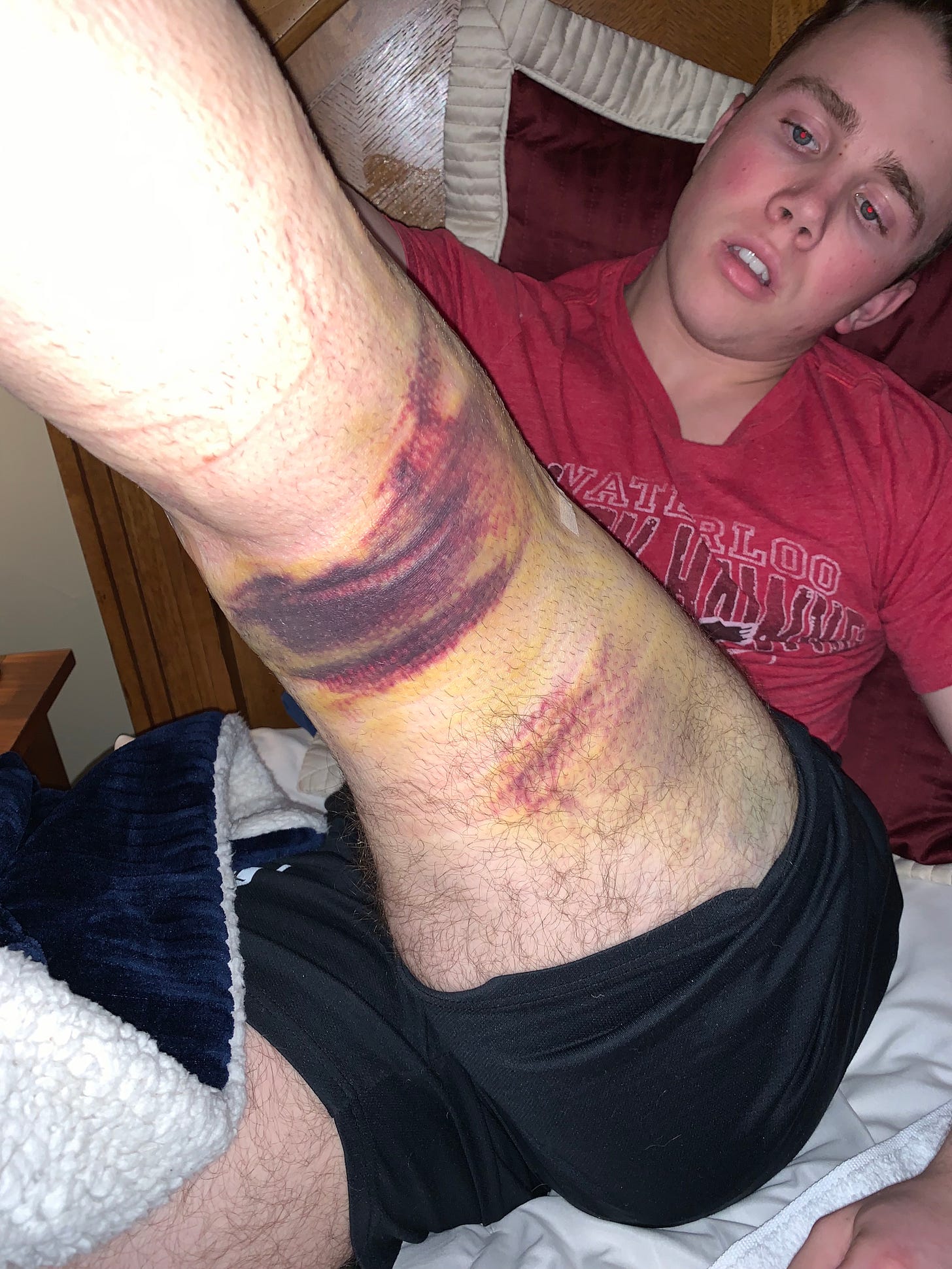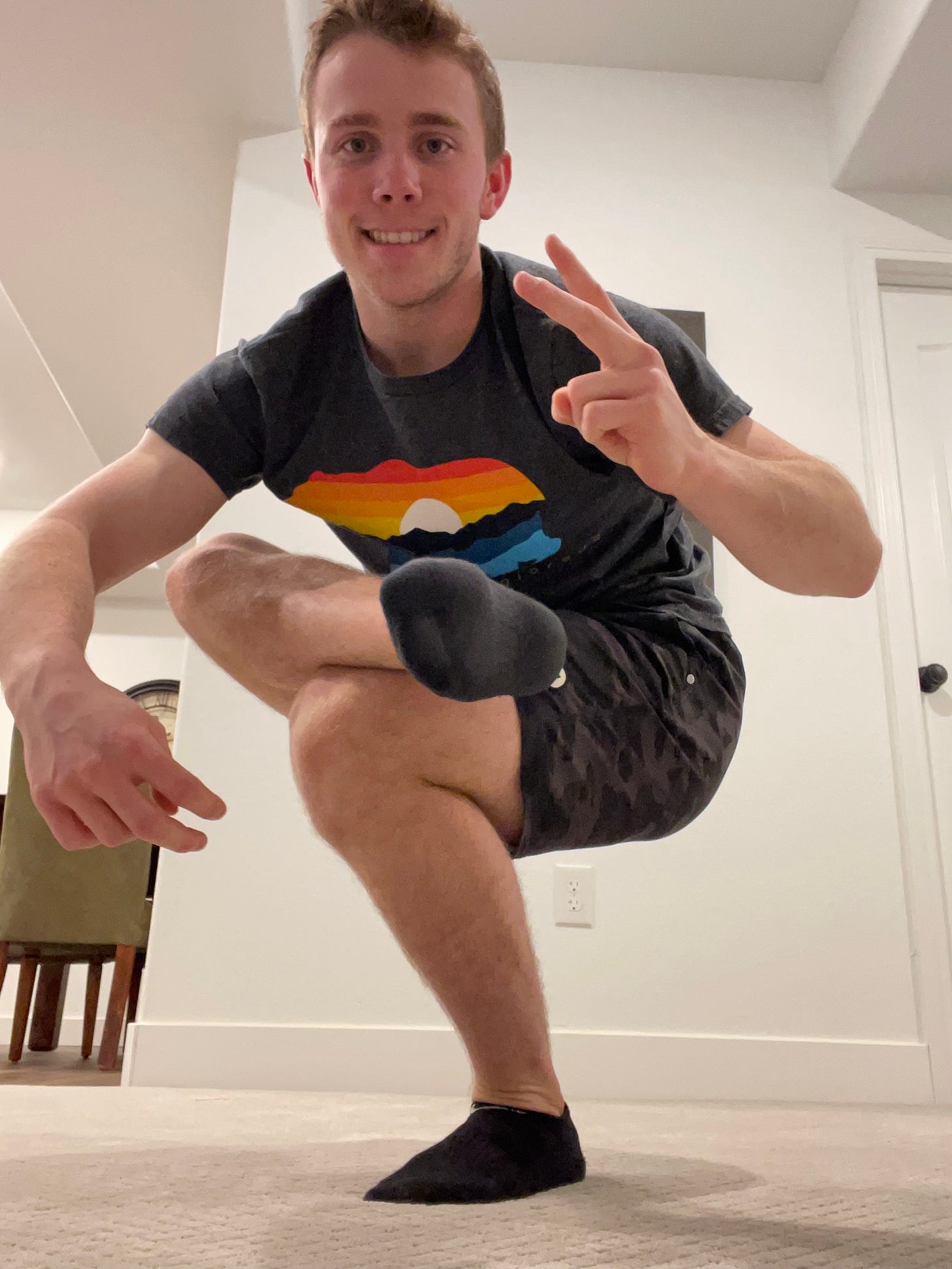After season-ending knee surgery in 2021, I was devastated.
Not just because I had a shoulder injury one year ago, but because I feared that I’d never return to my athletic self again.
This was me:
I felt like I was already in my 70s, with a stiff knee and trouble walking.
After surgery, my knee was a rigid, rotten piece of flesh. After being in crutches for 6 weeks, it was so stiff that I needed a rope to bend it just a few degrees.
Not only was I in pain, but my parents had to help me with almost everything: breakfast, getting out of bed, and even taking a shower (don’t worry, it wasn’t that weird).
Although I did my knee stretches every day, I thought I had to come to terms with something: that I’d never be fully flexible again.
This bummed me out: I’m very athletic, like to lift, hike, fly fish, and just walk. Being forced to stay in bed and be on crutches was one of the most painful things I endured.
But I knew like many other things in life, sometimes we have limiting beliefs that dampen our potential. It turned out that I was right…
One day, I discovered Dr. Andrew Huberman’s podcast episode on flexibility and realized something: you can actually improve your flexibility over time.
I was also shocked to find out: we lose 10% of our flexibility every decade if we don’t stretch. Our flexibility is the first thing we lose in the aging process.
The good news?
You can easily offset these losses by making a stretching routine part of your habits.
While those numbers might sound scary, let’s ignore them for a second.
Stretching is one of the best tools that you can use to relieve your pain and improve almost every aspect of your life.
Something that drugs can’t do.
Stretching will:
Improve your posture
Stabilize your balance
Relieve back and neck pain
Loosen tights hips and muscles
Boost your physical performance
Stretching will make you feel younger and help you do your favorite physical activity for as long as possible. It’s essential, whether you want to be able to hike, fish, play tennis, lift weights, and do whatever you want as long as you want.
It also has the potential to:
Reduce tumor size
Help you destress and relax
Reduce your pain and headaches
I’ve stretched nearly every day for the past 2 years, and it’s made everything else in my life better.
Now, it’s time to teach you the protocol I adopted from Dr. Huberman.
Remember: flexibility is flexible. I used to think that you were either flexible or not, but I learned that I was dead wrong.
It’s something you CAN improve.
Now, let’s explore how.
An Evidence-Based Protocol
The most safe and efficient way to increase range of motion in the long run is static stretching.
What is static stretching?
As the name suggests, it’s just holding a stretch in place (and not moving).
Here are some key, evidence-based insights that also give you the best shot at avoiding injury:
Do static stretching at the end of the workout, not the beginning.
Make sure your muscles are slightly warmed up before your stretch (ie walk or swing your arms).
Hold your stretch for a total of 5 minutes per week per muscle group.
For each muscle, do 2-4 sets of 30s holds, 5 days a week.
Key: focus on feeling a nice, light stretch. It should feel light and low intensity. It shouldn’t be painful.
If that sounds complicated, don’t worry. I’ve simplified it below, so keep reading.
There’s two other interesting things about stretching you should know:
On the pain scale, low intensity static stretching is more effective for you than a moderate stretch. Shoot for around 30-40%. It should feel nice and light.
Based on the research, you need to do it about 5 days a week. To make it a new habit, I’ve created a short daily ritual of 15-20 minutes…
Here’s what I do:
To simplify the numbers from above:
Do 1 set of a 60 second hold
Do this for each muscle group every day you stretch
Stretch after every workout
If you’re not in the gym that day, go for a quick walk after dinner and stretch then
You could also alternate and do 2 sets of 30s holds, but that’s up to you.
To get started on your mobility journey, feeling younger, and living better, you’ll enjoy the following video:
Soon, I’ll compile a lower-body stretching routine to help you eliminate knee, hip, and back pain.
All through some simple stretches.
- BB
P.S. Thank you for reading! If you liked this, you might enjoy my Twitter feed, where I share most of my ideas.




